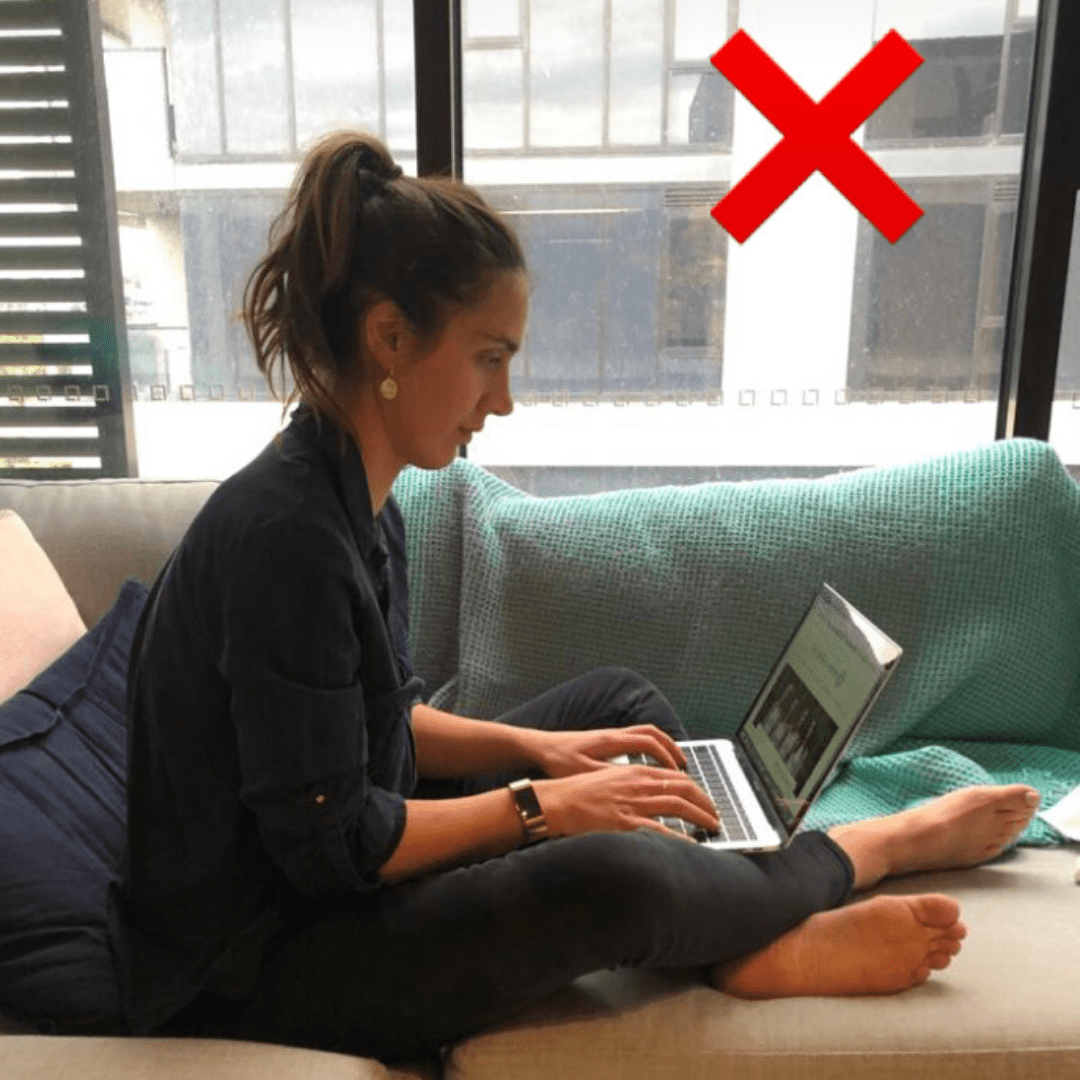
Are you working from home? Check out these tips for best posture with Osteopath, Dr Nicole Cukierman
Due to the outbreak of COVID-19 many of us are now working from home, making for the perfect time to look at our home workplace ergonomics!
Maintaining the correct posture while we work not only reinforces the natural curves of the spine but also minimises stress on the body. When seated, body weight is transferred to supporting areas, mainly the pelvis and surrounding tissues.
Prolonged sitting in a poor posture negatively effects joints and muscles in your neck, back, shoulders and wrists and can lead to various types of pain. This pain can present as headaches, backaches, disc irritation, tight hips, repetitive strain injuries and carpal tunnel syndrome. It also leads to a restriction in our movement. Try sitting in a slumped position and rotating your neck to the left and right. Now sit in an up-right position and try turning your neck again. Notice an improvement in your mobility the second time?
Leaning over while working can also affect your breathing! When seated in a slumped posture our diaphragm becomes compressed and restricted. This results in a decrease in lung function, meaning less oxygen flowing through the body and consequently less overall energy and function. When seated in an upright position and breathing through our diaphragm we are then able to activate our Parasympathetic Nervous System, otherwise known as our ‘Rest and Digest’. Diaphragmatic breathing aids in digestion, promotes relaxation, de-escalates stress, and let’s face it, we could all do with a little less stress.
Furthermore, an article published in 2018 demonstrated that an incorrect pose creates demotivation, tiredness and disinterest, compared to sitting in a positive pose which resulted in high performance, greater attention and focus.
Dr Nicole Cukierman is now available for one on one consultations in person, as well as digital consults. You’re welcome to book in with Nicole.
Dubey, N., Dubey, G., Tripathy, H,. & Naqvi, Z. (2019). Ergonomics for Desk Job Workers- An Overview. International Journal of Health Sciences and Research, Vol. 9 (7), 257-266. Retrieved from https://www.researchgate.net/publication/334972044_Ergonomics_for_Desk_Job_Workers_-An_Overview